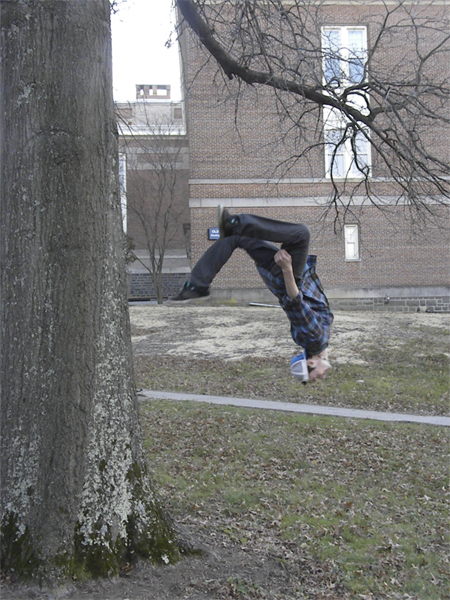

Running up walls, flipping off trees, jumping from one building terrace to another, pushing the limits of movement to the edge of what is humanly possible. An alluring combination of the thrilling dangers of extreme sports coupled with a strength and grace evocative to that of a ballerina’s. This is parkour.
Parkour is the physical discipline of training to overcome any obstacle within one’s path by adapting one’s movements to the environment, according to americanparkour.com. Parkour practitioners, also known as traceurs, use different physical skills such as vaulting, running and jumping, balancing, climbing and using other techniques to
maneuver through their surroundings.
The first group committed to the sport, the Yamakasi, developed Parkour in France in 1997. At the forefront of parkour’s advancement and promotion was — and still is — the Yamakasi’s top athlete, internationally known traceur, David Belle.
As Belle and the Yamakasi crew gained esteem as traceurs in France, the sport spread to other areas of Europe and then overseas. Its influence has spanned across America, with traceurs practicing their cat-passes and Kong-vaults on various obstacles around the playgrounds, streets and buildings of our country. Even in New Paltz, traceurs are indulging in the same activities.
Third-year visual arts major Alex Nye said he loves the adrenaline rush he gets from parkour.
“It’s kind of like, that thrill you get from taking big risks with bad consequences,” he said. “I like that feeling of an adrenaline rush.”
Nye said his parkour days essentially started as early as he can remember, always wanting to climb or jump off something. As he matured and became more capable of throwing flips, Nye would practice on his trampoline and off diving boards at the town swimming pool near where he grew up in Albany.
Nye said it was important that he learned his tricks in those places in order to decrease the chances of possible injuries.
“It’s important that you feel comfortable with your tricks before you try to be doing them onto the hard ground,” he said. “Try your tricks and flips in a safe environment before you bring it to the street.”
Now that Nye feels his tricks, such as the back flip and cork five-forty, are “on lock,” he is capable of pulling them off on various obstacles, including some around the SUNY New Paltz campus. On Nov. 20, 2011, Nye, along with a fellow traceur and classmate third-year graphic design major Alex Sobiecki, were at the cobblestone New Paltz sign behind Old Main, running and flipping off of it only to land gracefully about seven feet down on the grass below.
Along with the various spin and flip combinations the two of them performed, Nye ran vertically up a tree and flipped off of it backwards.
Sobiecki, also a skier capable of throwing flips over 70 foot gaps on the mountain, said he thinks Nye has admirable skill as a traceur.
“I think he’s pretty talented,” Sobiecki said. “He’s got the crazy side you need to have in a sport like this and he lands most of his tricks because he has the confidence to land them.”
